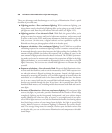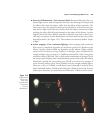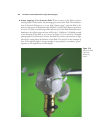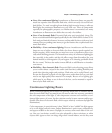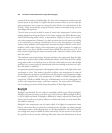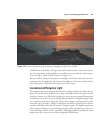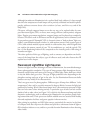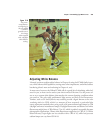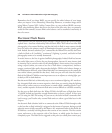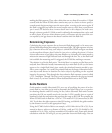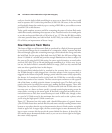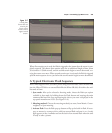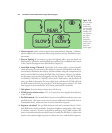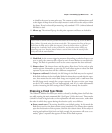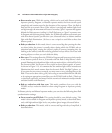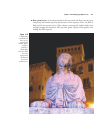
Remember that if you shoot RAW, you can specify the white balance of your image
when you import it into Photoshop, Photoshop Elements, or another image editor
using Nikon Capture NX2, Adobe Camera Raw, or your preferred RAW converter.
While color-balancing filters that fit on the front of the lens exist, they are primarily
useful for film cameras, because film’s color balance can’t be tweaked as extensively as
that of a sensor.
Electronic Flash Basics
Until you delve into the situation deeply enough, it might appear that serious photog-
raphers have a love/hate relationship with electronic flash. You’ll often hear that flash
photography is less natural looking, and that the built-in flash in most cameras should
never be used as the primary source of illumination because it provides a harsh, garish
look. Indeed, the most advanced “pro” cameras like the Nikon D2xs and D3 don’t have
a built-in flash at all. Available (“continuous”) lighting is praised, and built-in flash
photography seems to be roundly denounced.
In truth, however, the bias is against bad flash photography. Indeed, flash has become
the studio light source of choice for pro photographers, because it’s more intense (and
its intensity can be varied to order by the photographer), freezes action, frees you from
using a tripod (unless you want to use one to lock down a composition), and has a
snappy, consistent light quality that matches daylight. (While color balance changes as
the flash duration shortens, some Nikon flash units can communicate to the camera the
exact white balance provided for that shot.) And even pros will cede that the built-in
flash of the Nikon D7000 has some important uses as an adjunct to existing light, par-
ticularly to fill in dark shadows.
But electronic flash isn’t as inherently easy to use as continuous lighting. As I noted ear-
lier, electronic flash units are more expensive, don’t show you exactly what the lighting
effect will be (unless you use a second source or mode called a modeling light for a pre-
view), and the exposure of electronic flash units is more difficult to calculate accurately.
For the pop-up flash built into the Nikon D7000, the full burst of light lasts about
1/1,000th second and provides enough illumination to shoot a subject 10 feet away
at f/5.6 using the ISO 200 setting. As you can see, the built-in flash is somewhat lim-
ited in range; you’ll realize why external flash units are often a good idea later in this
chapter.
An electronic flash (whether built in or connected to the Nikon D7000 through a cable
or the hot shoe or fired wirelessly) is triggered at the instant of exposure, during a period
when the sensor is fully exposed by the shutter. As I mentioned earlier in this book, the
D7000 has a vertically traveling shutter that consists of two curtains. The first curtain
opens and moves to the opposite side of the frame, at which point the shutter is
completely open. The flash can be triggered at this point (so-called front-curtain sync),
David Busch’s Nikon D7000 Guide to Digital SLR Photography406



